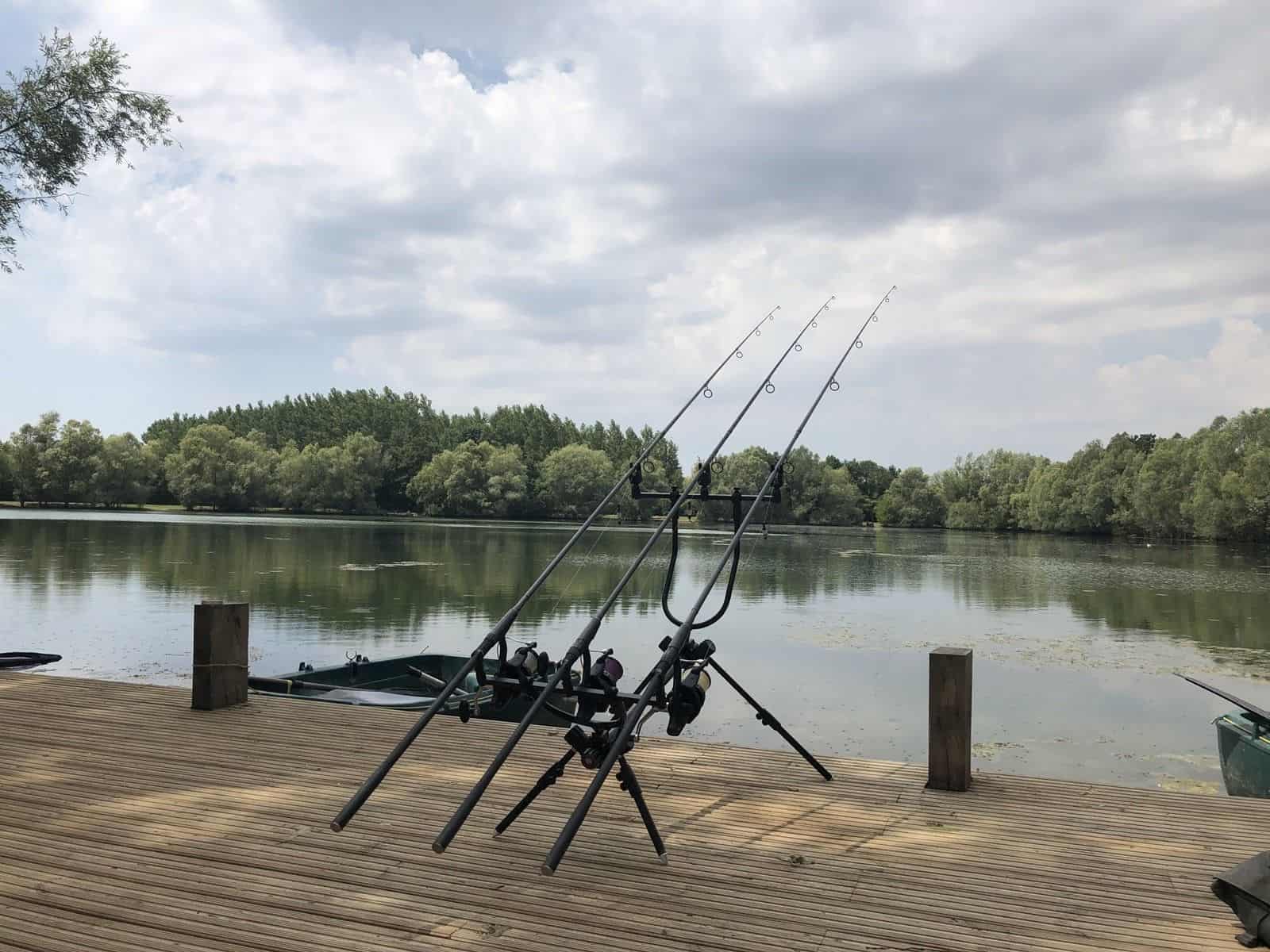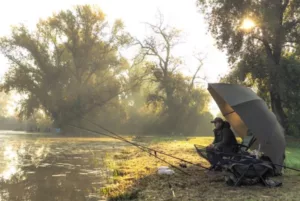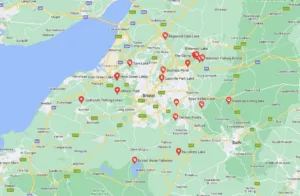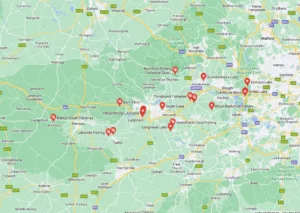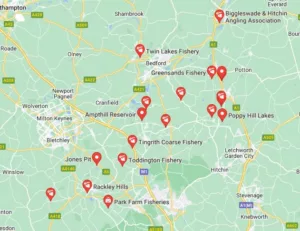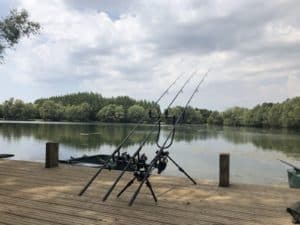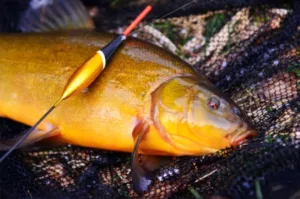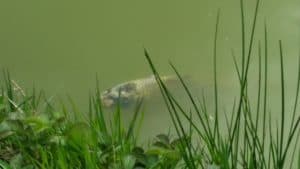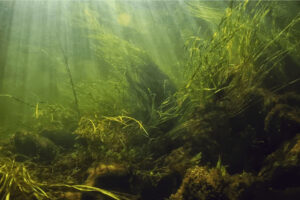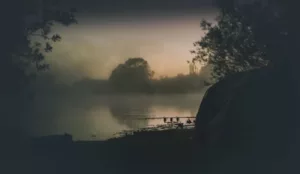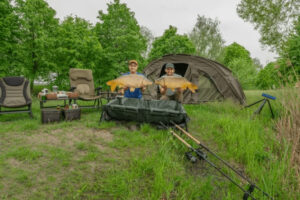When carp fishing big waters, we all have our own idea about what actually constitutes being a big venue and I guess it’s all relative to the size of venues that you have been fishing previously.
The first time I walked onto a carp lake of over 30 acres, having only previously fish farm ponds before that, I didn’t know where to start I was completely intimidated by it and I felt so out of my depth. It actually put me off a bit so it was probably about 10 years before I went back there.
Walking onto a big lake for the first time I would actually treat them very much like I would any other venue, and obviously you need to find the carp on a big lake which could have a perimeter of over 1.6 miles, it just means a lot more legwork than if it was a smaller venue, but at the end of the day you have to find the fish and that’s applicable on any venue, no matter how big it is.
Don’t Cast Out Until You Find The Fish
Locating them isn’t always easy and the fish don’t always necessarily show where they are, but for me personally, I can’t even contemplate getting the rods out of the van until I’m 100-percent sure I’m in the right location. A typical session even if not on a large water, it may not be uncommon for me to have the rods out of the water, just walking around the lake, for longer periods than I’m actually angling.
I’m quite happy to spend the day doing laps with a good pair of polaroids climbing trees, looking in all sorts of nooks and crannies, just trying to find the fish. That for me it is way more important than spending time with the rods in the water in areas where they may not even be any fish.
When I do eventually find a group of fish, after what may be hours and hours walking around searching, I get that feeling of excitement again when I find the fish. It goes back my days as a kid when I first started fishing, I get that feeling of excitement whilst also doing my best to try and control it, I do struggle, it makes me desperate to run back to the van and grab the rods.
Stalking Carp in the Margins
Stalking is, without a doubt, one of my favorite methods. Being able to watch the carp at close quarters and observe their behavior and their actions, watching them move around and seeing which areas they prefer to be in, then looking at spots where you feel they are perhaps more likely to tip down and take a bite. Obviously, you can see the fish in the water and see a group, and think, I want that one, and then you do actually get the fish that you’ve actually selected, it is absolutely incredible, even more so on a big lake. To think all that water it could be swimming around in and I just got him only a few feet from the bank.
Locating Carp On Big Waters
There really is no room for complacency if you see feeding fish, you have to take those chances when they arise. And if the fish are close to you but not quite there, then you have to move. You may not get another chance to locate the fish for hours or even days, so when you do see them, you need to take your chances when they are there.
Large water carp can often be very nomadic, and fishing for them can be like a game of chess where you always want to stay one step ahead but quite often you are actually one step behind.
There are times when you aren’t able to find carp, and in those situations, it does come down to watercraft, a little bit of gut instinct, and also the weather conditions that will determine where you actually end up setting up. I have quite a few weather apps on my phone that I do keep a close eye on. A new fresh wind is as good a bet as any in these situations as to where the carp will actually be located, and being in an area that is about to receive a new wind is a huge advantage. It’s one way of staying that one step ahead of the carp.
Carp Fishing Journal
If I am going to be fish in a venue regularly, I do like to make notes of any features that I find, and any time spent with a marker rod can prove invaluable. Whether it’s during the actual fishing time, or if you have a spare few hours, pop down the lake with a marker rod and map out the swim, and store all that information for future reference.
All of which comes with absolutely invaluable if I’m not able to locate carp and I am having to rely purely on my gut instinct. Having an understanding of the swim I’ve moved into, and knowing where those features are and however many wraps there are to certain marks, will mean I can be fishing very quickly with no disturbance to the swim, and there would be no risk the spooking any fish that may be in the area.
Also, I mark down any areas where I’ve seen carp showing regularly, and it may seem pointless and futile at the time, but maybe 1, 2 or however many sessions down the line, that one little snippet of information that you stored may actually be that one final piece needed to complete the puzzle.
Over time, you will notice patterns and you will get a sixth-sense as to where the carp will be each time you are at the lake. Eventually, you will be able to pick off particular fish and start to dominate the lake.
It may take you a lot longer to find the fish, but the location is key and you need to find the fish before you start fishing for them. Once you have found them, all that is left is to set the traps and wait for the bite.
I have made a lot of mistakes during my fishing sessions and don’t want you to make the same mistakes. I’ve learned the hard way over 20 years of fishing most weekends, testing, tweaking, and testing again and now want to help you excel with your carp fishing.
If you need any help, you can reach me at Fishing Again’s Facebook page
Last Updated on February 8, 2024 by Shane

